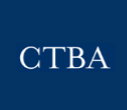Introducing CTBA’s Chicago Budget Tool
by Daniel Kay Hertz, Research Director, and Drazzel Feliu, Research Associate
Part of CTBA’s mission is to make public budgets — whether they come out of Springfield, City Hall, or anywhere in between — more, well, public. After all, residents can only hold their elected officials accountable for how they spend public resources if that spending is transparent and understandable.
In that spirit, we are proud to publish CTBA’s Chicago Budget Tool, which combines nine years of cleaned, standardized budget data from the City of Chicago and puts it into an interactive, online display available for free to anyone.
What does the Chicago Budget Tool offer that you can’t get elsewhere?
While the data in the Chicago Budget Tool is drawn from public sources (largely from the annual Budget Recommendations files available here), each file contains data from just one year, making comparisons across years clumsy and difficult. Even worse, line items and even department names aren’t always consistent across years — meaning even once you’ve dumped each year’s data into the same file, the numbers still won’t line up.
After months of data cleaning, however — and important help from City Bureau, which translated thousands of pages of PDFs to Excel-readable CSV files — the Chicago Budget Tool not only has all available data from 2011 through 2019 in the same file, but the names of departments, functions, and line items have all been standardized across years, so that you can answer basic questions like: Has funding for this department gone up or down over the last five years? Where has its funding come from? What major programs is it spending on?
Moreover, making sense of the raw data in the Budget Recommendations files can be intimidating, even to policy experts. The Chicago Budget Tool has tried to organize the data into understandable chunks, translating tens of thousands of lines in a spreadsheet into bar graphs and charts that can be manipulated with pull-down menus and multiple-choice buttons.
In addition, explanatory tooltips — questions on major terms and concepts with answers that pop up when you hover your mouse over them — are on each page to make the tool more accessible.
A quick tour
We encourage you to explore the Chicago Budget Tool. If you haven’t spent much time looking at the city’s budget in detail before, it may be helpful to read our Chicago City Budget 101 explainer to get your bearings. For example: the Chicago Budget Tool contains data only on the City of Chicago’s budget — not any of its sister agencies, such as Chicago Public Schools, the Chicago Housing Authority, or others.
Once you’re ready, here’s an overview of what you’ll find:
- Start here
The tool is divided into six pages, which you can toggle between at the top of the page. The first page, called “Start here,” gives a high-level overview of Chicago’s budget in three pie charts: How the money is spent; Where the money comes from; and How the money is organized. For each chart, you can select any year between 2011 and 2019 at the top right of the page. Hovering over a pie slice will give you more detail.
2. Appropriations over time
The second page focuses on how Chicago has spent its money since 2011. Spending totals are displayed in a bar chart. You can filter the chart by Service Category, Department, Fund Category, and Fund, and see the totals as dollars, percentage of the total city budget, percentage of the city budget minus the airports, and percent of the Corporate Fund.
3. Revenue over time
The third page is similar, but shows the city’s revenue since 2012. You can set level of detail, see totals by dollars or percentages, and filter to particular funds.
4. Deep dive: Spending
The fourth and fifth pages are designed to give a more detailed look at particular spending programs and revenue sources. On the fourth page, you can see spending listed by department, fund, program, and line item. For each of these categories, the left side includes an itemized spending list, organized from largest to smallest, for the year you have selected. The right side shows the same list, but as capsule line graphs showing trends over time.
If you select any item from any list, it will filter all of the other lists for that item. For example, selecting “Police” under “Totals by department” will filter “Totals by fund,” “Totals by program,” and “Totals by line item” for spending on the Police Department.
5. Deep dive: Revenue
The fifth page operates in the same way for revenue details. Again, selecting any item from any of the lists will filter all of the other lists for that item.
6. Documentation
The last page contains details about how we assembled and cleaned the data.
